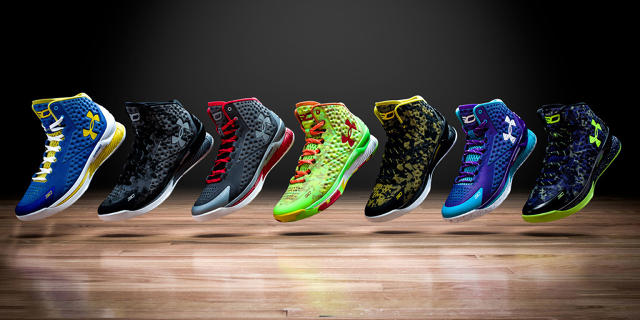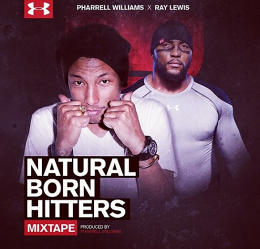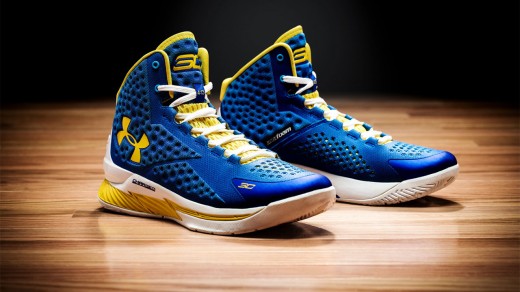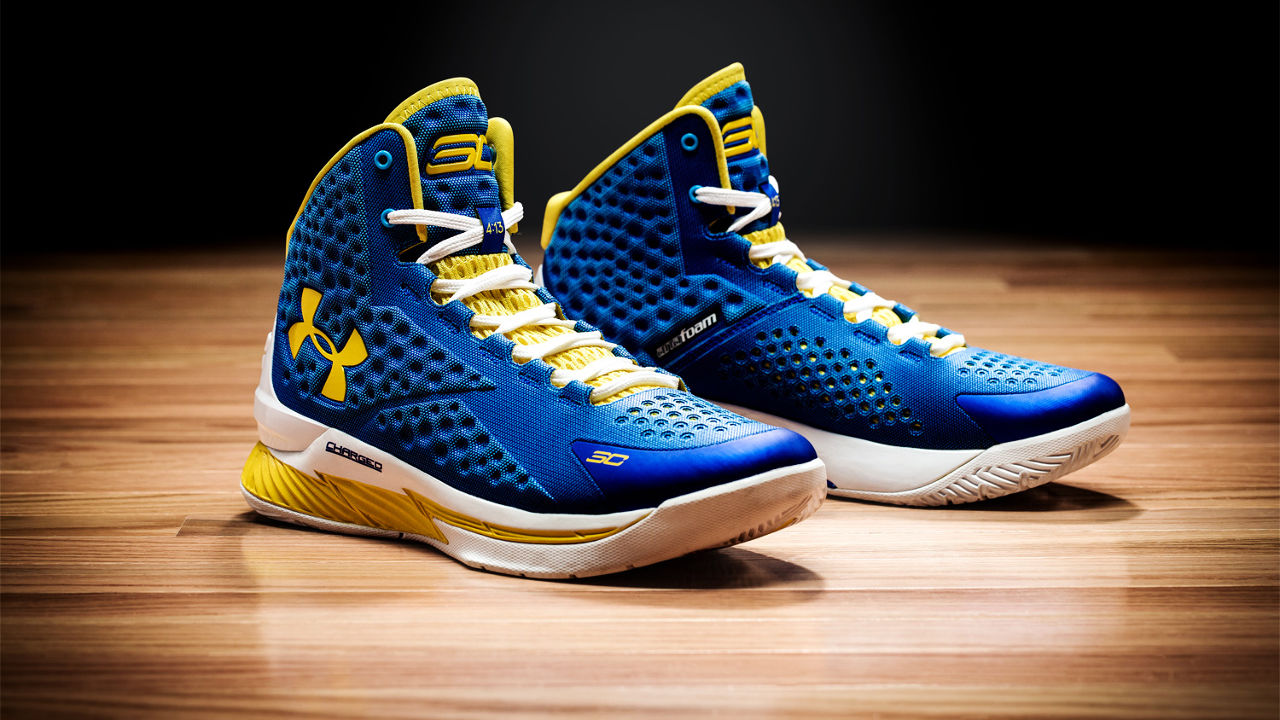Say Hello To Russell Simmons’s Secret Weapon
Tricia Clarke-Stone creates brand narratives that penetrate pop culture. Is her campaign for Under Armour’s new sneakers a slam dunk?
Resistance to Tricia Clarke-Stone‘s charm is futile.

As we begin our conversation, Clarke-Stone, Russell Simmons’s protégé and business partner, easily draws me in by chatting about the things she loves: restaurants, cocktails, fabulous clothes, and her twin sister. But it would be a mistake to confuse her bubbly, easygoing demeanor for a lack of moxie. Soon enough it becomes clear that Clark-Stone is a fiercely determined woman who. Will. Achieve. Her. Goals. Today, those goals involve a pair of sneakers.
A little less than two years ago, Clarke-Stone and Simmons cofounded Narrative, a marketing firm that helps brands create immersive experiences for consumers, grounded in their respective expertise in technology and entertainment. As they create campaigns for brands, they’re equally obsessed with having robust data analytics and doses of celebrity content. Over the last few months, Clarke-Stone’s schedule has been packed with new business pitches as she tries to ramp up Narrative’s client base: she’s already scored partnerships with the likes of Sony, Samsung, and Bombay Sapphire.
At this very moment, though, she is singularly focused on launching Under Armour’s brand new sneaker, the Curry One, created in partnership with rising NBA star, Stephen Curry. The stakes for this campaign are high. With this celebrity endorsement, Under Armour is aggressively taking on it’s biggest competitor, Nike, which dominates 95% of the $3 billion basketball market. While Nike’s famous Air Jordans first hit the market in 1984, Under Armour only started making basketball shoes four years ago, so it has a lot of catching up to do—which is why it has enlisted Narrative to create buzz around the Curry One before it officially debuts on February 13.
Last week, Clarke-Stone and her team at Narrative organized an event in Oakland, California, for shoe market reporters and influencers (or “Sneakerheads” to be more accurate). While Sneakerhead junkets are not new, Narrative tried to re-imagine the concept by transforming a gym into an elaborate Under Armour Design studio, complete with a deconstructed Curry One and an enormous mood board that gave attendees insight into the aspects of Stephen Curry’s life that inspired the shoe’s design. Instead of offering a boring, generic press kit, Narrative created a fake tabloid newspaper, the Under Armour AM, that contained details about the shoe. And in addition to meeting Curry personally in a “huddle,” members of the media could literally see the world from Curry’s shoes’ POV, using a virtual reality tool enabled by Google Cardboard technology. Not your average press conference.
Clark-Stone’s history of rethinking traditional advertising and marketing practices dates back to 1998. After graduating from Skidmore College, she joined media conglomerate Emmis Communications as an entry-level sales rep, where her job was to cold call businesses and convince them to buy radio ads. Even back then, she instinctively felt that the way to stand out from her peers was to be more creative. “One day I realized that if I offered to throw creative services into the package for free, more brands would sign on because they felt they were getting more bang for their buck,” she says. Clarke-Stone started proactively advising her clients on the content of the ads—a ballsy move for a lowly sales rep—but before her bosses had a chance to question her methods, they noticed how much revenue she was raking in: over a million dollars in her first year, according to Clarke-Stone, putting her miles ahead of the other rookies. In some ways, as the CEO of Narrative a decade and a half later, Clarke-Stone offers her clients the same value proposition. Under Armour is trying to compete with the giants of the basketball world with a fraction of their advertising budgets: with Narrative, they are hoping to make a splash through creativity and execution, rather than through big ad spends.
Still not even forty years old, Clarke-Stone’s ascent through the ranks of the marketing industry has been remarkably fast. When she looks back at her career so far, she attributes her success to two things: her determination not to let her age get in the way of her success and the valuable support of mentors. In her mind, the two things are intertwined. “A lot of young people go out and ask people they admire—point blank—to be their mentor,” Clarke-Stone tells me. “That’s the wrong approach. Mentorship is really a two-sided relationship. Business leaders want to invest in people who have a strong, clear point of view and who deliver results, not just because they ask.” From the beginning, Clarke-Stone devoted herself to exceeding her sales targets and she believes that this won her the attention of people who could help her advance in her career.
Early on, Clarke-Stone found that being young was frequently a liability. “I definitely experienced my share of age discrimination,” she says. After two years at Emmis, she knew her bosses were impressed with her performance, but they hesitated to promote her. In 2000, when the opportunity presented itself, she decided to take a job at the web portal Excite@Home at a time when the Internet was just coming into it’s own. But after only six months into her new job, the top brass at Emmis realized they had lost a rising star and reached out to Clarke-Stone asking whether she would come back to launch the digital division at the company. Clarke-Stone gladly took the offer, but the problem was that six months at Excite had hardly transformed her into an authority on the Internet; she spent nights and weekends over the next months trying to wrap her head around the nuts and bolts of online advertising. “I was in my early twenties and already feeling a bit insecure about whether I had what it took to take on this responsibility,” she recalls. “So on my own time, I took classes, talked to experts and read tons of blogs, just so that I come to work feeling prepared to make decisions.”

Deborah Esayian, a senior Emmis executive overseeing the interactive division, took notice of Clarke-Stone’s work and wanted to support her. “Deborah was the ideal mentor in many ways, providing advice, answering my questions, letting me bounce ideas off her constantly and putting me in front of the CEO whenever she could,” she says. Clarke-Stone kept delivering innovative solutions, such as developing new ways to make money from banner ads on radio station websites. “If you can believe it, back in the early days of the Internet, radio stations would give digital ads away free if companies bought on-air ads,” Clarke-Stone says with a laugh. “I know I am totally dating myself by saying that.” Over eight years, Esayian worked closely with Clarke-Stone, helping her climb the ranks until she was made a director.
Then, out of the blue, she received a call from Russell Simmons’ office about a top sales job at his media company, Global Grind. Simmons had reached out to his network for possible candidates who could help make Global Grind profitable and Clarke-Stone’s name came up. “She has a history of always making her numbers,” Simmons recalls. “Of course, she’s resilient, hard-working, smart, and thoughtful—the qualities you need in a leader. But at the end of the day, what it’s about is whether you make your numbers.”
Clarke-Stone remembers their first meeting similarly. Simmons appeared to be laser focused on her track record of hitting her targets. “At our first meeting, it was very clear he knew my box score and my stats; he had closely studied how I had delivered results in the past,” Clarke-Stone says. For her part, Clarke-Stone took the meeting because she was impressed by Simmons’ ability to turn all his companies into lifestyle brands. “People didn’t think of Def Jam as just a music company; they wanted to wear Def Jam jackets and be associated with that way of life. With Phat Farm, he basically created the urbanwear category,” she says. “He always identified a trend, got into that space then immediately began to define that cultural moment was going to be.” While a job at a startup sounded like chaos to her after years working at an established company, Clarke-Stone was intrigued by the opportunity to bring her marketing acumen to companies that changed culture in profound ways, so she took the job.
Over the last five years at Global Grind and more recently, as a cofounder of Narrative, Clarke-Stone’s has work has involved learning, under Simmons’ tutelage, how to identify cultural trends and then monetize them. With Global Grind, for instance, Simmons had created an early digital media outlet devoted to hip hop culture that sought to crack the online advertising code. But when Clarke-Stone joined in 2009, brands were not signing on to advertise on the site, since more established media sites—those in the Condé Nast group, say—seemed like surer bets. So Clarke-Stone used her classic approach of finding ways to offer brands more value by offering creative services along with the ad space. “I wanted to give advertisers something more than they could get on the other online magazines and news sites, so I thought of creating collaborations and branded entertainment with them even before native advertising was widespread. My whole idea was to give consumers experiences instead of ads,” she says.

Her pitch worked: she managed to get blue chip brands like Procter and Gamble, Adidas, Ford, and Toyota to sign on, finally bringing in revenue and making Global Grind profitable. “They advertised with us because we were more than a media company: we were offering creative strategy. We were building the ad products we were selling them,” she says.
In some ways, starting an agency was the perfect way for Clarke-Stone to do the kind of creative thinking she does best. Instead of selling ad space with some ad development thrown in to sweeten the deal, she can finally focus on helping brands create campaigns from scratch. “I wanted to start impacting culture with my work, like Russell had done over the course of his career,” she says. “I wanted to create an agency where we would put culture, technology and storytelling at the center of everything we do.” Simmons, for his part, believed so strongly in the need for an agency like Narrative that he personally invested seed capital in the venture, something he rarely does with his own companies. He also felt that he could serve as a mentor to Clarke-Stone, pushing her to make the agency a success. “I have a lot of experience with both success and failure,” he says. “Talented people often quit on their dreams and don’t trust their instincts. My role is to encourage them to have faith in their ideas and keep pushing.”
Narrative’s work with Under Armour, one of the first companies to sign on with the agency, is a good example of how Clarke-Stone wants to help brands resonate culturally. “Under Armour is perceived as a sports utility brand—something that you leave on the court or the field—rather than something that is part of your life,” Clarke-Stone tells me. “We needed to find a way for the brand to penetrate culture and be woven into the lifestyles of target users.” With the events surrounding the Curry One basketball shoe, the objective is to drive home the message that Under Armour is not just about equipment, but also about style and passion for the game. But broadly, Narrative is trying to weave Under Armour into pop culture and Clarke-Stone thinks that music might do the trick.
In 2013, Narrative came up with a digital campaign called “Natural Born Hitters,” which paid homage to hitmakers in the worlds of both music and football. They reached out to Pharrell Williams, who was tasked with making songs that embodied three important elements that go into preparing for football season: training, practice, and pre-game. He wove these songs into sounds of a game and recordings of football legend Ray Lewis giving a motivational pep talk to a team about to hit the field.

Narrative gave out USB drives that looked like cassette tapes with Pharrell’s songs on them cool venues, like Undefeated, a well-known sneaker store in L.A. and the Wythe Hotel in Williamsburg. “We wanted to put Under Armour in lifestyle spots that the brand would never otherwise be found,” Clarke-Stone says. Narrative also wrapped phone booths around the country with QR codes allowing fans to instantly download tracks on their phones.
To get community involvement, Narrative created a mixer tool on Soundcloud and invited fans to remix Pharrell’s songs to come up with a game-time track; the winning song was featured on a Monday night football game. In Under Armour stores, Narrative set up Leap Motion systems that allowed customers to interact with tracks by moving their bodies. “Narrative executed this campaign three months after opening our doors,” Clarke-Stone says. “It speaks to what we’re trying to do here, which is to create products that really resonate culturally with our target audiences.”
(322)














